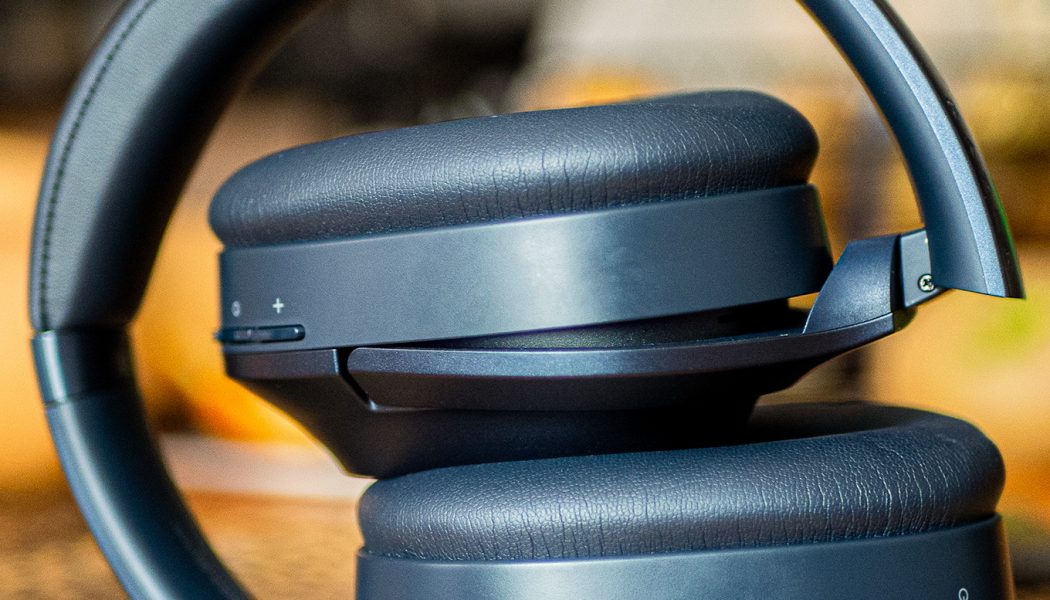Razer’s new $200 Opus noise-canceling, wireless headphones aren’t good enough to tempt me away from my tried-and-true $350 Sony WH-1000XM3. I’m not surprised by that, partially given the huge price difference. More so, I wasn’t expecting miracles given Razer’s comparative lack of experience in making headphones. However, they are good enough to make me doubt if my Sony’s are that much better to warrant costing almost double the amount. My answer to that question is yes, but nevertheless, that the Opus is making me question it at all speaks to their quality and value.
For the money, these come with almost everything I want in a set of headphones: comfort, good sound quality, and long battery life — with a few extra features as a bonus. For instance, the ear cups can swivel 90 degrees to rest on my chest, then into an even more compact form to fold up into the included hard case. These headphones can automatically pause when you remove them from your ears, as well.
As far as value is concerned, Razer nailed a lot of little details with the Opus and it’s easy to recommend them over most other $200 headphones with similar features. Though, if you’re looking for an excellent noise cancellation effect that blocks out a lot of noise, or full-bodied sound performance that is truly engaging, you’ll need to pay a little more for your headphones.
Razer’s new headphones are THX-certified, meaning that their default frequency wave is flat and unbiased toward bass or highs. Folks who work in music studios rely on reference headphones so they can trust that what they hear with them is actually reflected in the master recording and vice versa. (Note: that the Razer-owned THX gave the Opus its esteemed certification raised an eyebrow, though the team assured me that it put Razer’s headphones under the same tough scrutiny as all other manufacturers that stroll in for certification.)
:no_upscale()/cdn.vox-cdn.com/uploads/chorus_asset/file/19984845/cfaulkner_200514_4023_004.0.jpg)
THX branding or not, a reference-style sound isn’t particularly exciting to listen to. Thankfully, the EQ settings can be adjusted in the Opus mobile app. The “amplified” EQ is more my speed, which punches up everything, particularly the lows and mids, to give it a more powerful sound. For $200, I think the Opus’ sound quality is on par with what I expected, if not slightly better. The Sony model that I referenced earlier has a bass-forward sound that makes everything sound warm. Some people (including myself) really like that kind of sound, others don’t. Even when you adjust Razer’s EQ to your liking, these stay true to their roots as reference headphones and avoid leaning toward having too much bass. It’s a very agreeable sound profile, not the kind that makes the hairs on the back of my neck stand up.
The noise cancellation is an area where the Opus doesn’t reach parity with more expensive headphones. I had to raise their volume up higher than I was comfortable with to block out most of the outside noise. Keeping the Opus at a normal volume with noise cancellation on, I can clearly hear my partner talking on the phone from across the room. If you’re in a relatively quiet environment, I think they’ll do the trick, but I’m not confident at all that these could dampen an airplane engine or the loud voices and noises you may want to get rid of during your commute.
:no_upscale()/cdn.vox-cdn.com/uploads/chorus_asset/file/19984848/cfaulkner_200514_4023_002.0.jpg)
What’s also not so great is that these give off a subtle hiss to compensate for, perhaps, not having a good enough algorithm to cancel out the noise. On the contrary, if you’re someone who has experienced “eardrum suck,” as the reviewers at Wirecutter put it — or the feeling that your ears are being pressurized by noise cancellation — these are less likely to be uncomfortable. The downside being, of course, that they don’t cancel out enough noise for my use.
I’m accustomed to fussing with awkward touch-based controls on my Sony headphones, and adjusting to Razer’s button layout has been simple. Granted, there’s nothing ground-breaking here, such as Marshall’s multifunction joystick for controlling the volume, song selection, and play / pause, but the volume and pause key can be found in an instant. It’s even easier if you just want to pause or resume music; just taking them off of your head will do the trick. The button to turn the noise cancellation on and off is alongside the left ear cup. Like a number of noise-canceling headphones available now, the Opus has a feature that switches on the microphones to let you hear what’s happening around you. You just have to hold the noise cancellation button to toggle it on, then lift off to go back into the ANC bubble.
:no_upscale()/cdn.vox-cdn.com/uploads/chorus_asset/file/19984843/cfaulkner_200514_4023_006.0.jpg)
The thing that I like most about the Opus is that, in a few important ways, I can rely on them like I do my Sony’s. They have long battery life that gets me through nearly an entire week of work. I can leave them on my head for hours without feeling discomfort, as well. Though, with noise-canceling headphones, you usually get what you pay for. And unfortunately, the Razer Opus headphones show their price tag when it comes to competing against high-end wireless headphones in the noise cancellation and sound quality categories.
These aren’t Razer’s magnum opus. But as its first set of noise-canceling headphones aimed at persuading people away from the Sonys and Boses of the world, the Opus is a solid, feature-loaded start.
Photography by Cameron Faulkner / The Verge










